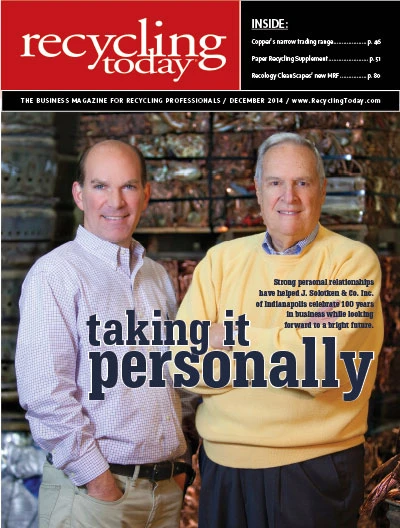 We all know today’s companies need to be more nimble, more innovative and more entrepreneurial. This shift begins with employees. By now, so much ink has been spilled on the need for employee engagement and empowerment that our eyes glaze over when (yet another) expert starts in on it. What we don’t know is how to effect the cultural change that needs to happen—especially when the company we lead is lumbering and bureaucratic.
We all know today’s companies need to be more nimble, more innovative and more entrepreneurial. This shift begins with employees. By now, so much ink has been spilled on the need for employee engagement and empowerment that our eyes glaze over when (yet another) expert starts in on it. What we don’t know is how to effect the cultural change that needs to happen—especially when the company we lead is lumbering and bureaucratic.
“The good news is there are some very specific steps you can take that will start the reaction shifts in your culture,” says Michael Houlihan, who, with Bonnie Harvey, wrote The Entrepreneurial Culture: 23 Ways to Engage and Empower Your People (Footnotes Press, 2014, www.TheBarefootSpirit.com) and the New York Times best-seller The Barefoot Spirit: How Hardship, Hustle, and Heart Built America’s #1 Wine Brand. “It won’t happen overnight, but it will happen,” he says. “You just have to take the right actions,” he adds.
Houlihan and Harvey know how to create engaged, empowered employees because they lived through the process. They started Barefoot Cellars in the laundry room of a rented Sonoma County farmhouse and grew it into America’s No. 1 wine brand. They were able to do so because of their dedicated employees. Today, they teach corporations how to infuse the principles they lived by into their own cultures, frequently consulting with Fortune 500 companies and other firms on how to establish and strengthen entrepreneurial company cultures.
The Entrepreneurial Culture explains how Houlihan and Harvey kept the spirit of entrepreneurship alive in their company. It complements the lessons from The Barefoot Spirit.
A selection of tips, excerpted from The Entrepreneurial Culture, follow on how to create an entrepreneurial culture at your organization.
1. Hire for hustle.
A great way to separate the entrepreneurial thinkers from those who aren’t is to place a special emphasis on hiring people with a sense of urgency, those who can and will move quickly and who don’t always have to be told what their next step should be. In other words, don’t hire solely based on someone’s technical skill set; you can always teach that. You can’t teach the other stuff, which is what will make the difference between an average company and a great company.
“At Barefoot, we called that ‘other stuff’ hustle,” Harvey says. “And we devised a few methods to use during interviews to figure out who had hustle and who didn’t.” As an example, she offers: “During the interview, give candidates a verbal rundown of the position, your company’s challenges and your expectations for the position. Then, have the candidate send you a one-page summary on a deadline. This will tell you volumes.”
2. Don’t skimp on training.
Many companies approach orientation like it’s a formality. New employees are ushered in, given a quick tour of the office and a rundown of the benefits offered, and then they’re expected to get right to work. This minimalist approach to training can have some counterproductive consequences, especially where judgment, relationships and potential are involved.
“Yes, being thorough with training will take more time, energy and maybe even money on the front end,” acknowledges Houlihan. “But the long-term benefits of making sure your people know not just the ‘whats’ but also the ‘whys’ of their jobs will be worth it.”
3. Use performance-based compensation.
When you have a compensation plan based on an hourly rate, you’re paying for attendance, not production. Regardless of how much they do or don’t accomplish, your employees will have an “I was there; pay me!” attitude.
While running Barefoot, Houlihan and Harvey learned that performance-based compensation is better for everyone: you, your employees and your company.
Here’s an example of how they made performance-based compensation work: If someone sold 100 cases in April 2000 and 100 cases in April 2001 (these numbers are unrealistically small for simplicity), their commission would be the same in both years. But if they sold 10 percent more—110 cases—they would get $1 for every case over that 100, or $10 more. If they sold 20 percent more in April 2001—120 cases—they would get $2 per case for every case over 100. Not just $1 for cases 101-110 and $2 for cases 111-120; they would make $2 for each case over 100, or $40 more. They didn’t just get higher pay for additional growth; they got the boost for all the growth. It kept multiplying. So, 30 percent more—130 cases—would earn $3 times 30 cases, or $90, and on up.
“Basically, our compensation system meant that producers couldn’t afford to leave, and nonproducers couldn’t afford to stay,” Harvey says. “Meanwhile, we constantly attracted new go-getters who were willing to bet on themselves.”
4. Get out of their way.
When your company isn’t able to meet its goals, your first inclination might be to blame your employees for being unable to execute. But you should take a look in the mirror before doling out blame. That’s because often leaders who want to blame their employees for not executing are actually using a leadership style that is keeping people from getting things done.
“Do you find it difficult to delegate important projects?” asks Houlihan. “Do you refuse to let their work see the light of day until you’ve personally reviewed it, leaving them twiddling their thumbs until they’ve received your feedback? Do you insist on running every new idea through legal before letting an employee pursue it? Are you a micromanager? Be honest. Do you engage in any of these behaviors?
“If so, it’s important to stop, step back and show your people that you trust them to make important decisions and do important work. When you do, you’ll give your team the freedom they need to help move the company forward—and you’ll free up a lot of time and energy for yourself, too,” Houlihan says.
5. Delegate effectively.
There’s a misconception that many leaders simply refuse to relinquish control of any of their tasks or projects to one of their subordinates. But, often, it isn’t about control at all. Many leaders want to delegate, but they don’t want it to look like they’re just dumping unwanted tasks on their employees or they don’t feel they have the time needed to train an employee to do a task.
Here’s the first step to take when it comes to delegation: Start handing over those tasks and projects that your employees can do or can almost do without your input. Trust their expertise and trust that if they really hit a wall, they’ll come to you. Everyone has a unique set of skills, abilities and talents. Often, your people will have firm—and sometimes surprising!—ideas about what they’d like to take on.
6. Let information flow freely.
Some companies use information as a type of currency—the right juicy piece of information can buy you lunch, help get you a promotion, bring kudos your way, or be traded for other valuable information. The flip side of this, of course, is that in large, siloed organizations it’s completely normal for one department or division to have no clue what the others are up to.
“Instead of a ‘need-to-know’ policy, at Barefoot we advocated a ‘know-the-need’ approach,” Houlihan says. “Your people are full of intelligence, ideas and passion—you just have to unlock those things. So do whatever you can to engage your entire team and keep the information free flowing. Of course, the most important way to achieve this is through transparency.”
7. Don’t wait for perfectly sunny conditions.
To create a culture where entrepreneurial thinking can thrive, you must make sure everyone understands that great ideas are always welcome. Then, give your employees the freedom to move forward on projects, even when conditions aren’t exactly sunny.
“The truth is, if we had let our ‘we’ll be ready whens’ dictate our business decisions, we’d probably still be wannabe winemakers,” Harvey says. “When we launched Barefoot Cellars, all we had was a laundry room to use as an office, a bank account that was running on fumes and no knowledge of our industry. And yet we gave ourselves the freedom to take the leap. We knew the risks, but we believed in what we were doing, so we went for it.”
“You have to give your employees the same benefit,” Houlihan says. “The truth is, conditions will never be perfect for any idea or initiative. Instead, you need to settle for ‘mostly sunny with a chance of showers’ or even ‘light drizzle’ and plan to get a little wet.” He adds, “Keep in mind that if your employees don’t ever feel comfortable enough to share these ideas or launch these projects, your company will definitely never benefit from them.”
8. Never waste a perfectly good mistake.
Most leaders look at mistakes as something to be avoided, and as a result they pass that sentiment down to their employees. But the most innovative, agile companies embrace mistakes. When you move from a culture that punishes mistakes to one that embraces them, your employees will have the freedom to take risks, and that’s where entrepreneurial thinking leads to great innovation.
When an employee makes a mistake, you want a culture that encourages him or her to learn from the mistake and change what led to it rather than a culture that encourages him to fear punishment and sweep that mistake under the rug. You want an environment where employees can acknowledge mistakes, take responsibility for them, learn from them and then move forward.
“I can’t stress enough how very important it is to investigate how and why an error occurred so that the faulty procedure or process can be fixed,” Harvey says. “That’s why Barefoot made sure employees weren’t afraid to make or report mistakes. Basically, our approach to mistakes was to say, ‘Congratulations! You found a new way to screw up, and that’s a good thing. We didn’t know that this could happen, but now that it has, we can keep it from happening again.’”
9. Always ask yourself, “How would I like it?”
Relationships have never been more important. A great way to ensure everyone at your company is committed to building strong relationships is to constantly ask, “How would I like it?” Houlihan recommends regularly asking yourself the following questions, answering honestly—even if it’s uncomfortable:
- Would I want to work for an employer who treated my labor as a commodity, trying to see how little I would work for? Or would I prefer an employer who sees people as assets, rewarding them for performance and acknowledging their achievements?
- As a leader, am I open and honest with employees about where the company stands, what challenges we’re facing and what I want?
- If I were a vendor and had two clients, one who treated me with respect and dignity and another who viewed me as a necessary evil, which one would get preferential treatment?
- Would I buy from a company that treated me like a pain in the neck if I had a problem with its product, or would I prefer to buy from a company that thanked me for bringing my concerns to its attention?
“At Barefoot, we believed that customers look for overall value when buying a product, not just a low price,” Houlihan says. “That’s why we turned down opportunities to cut costs and labor many times.”
10. Say, “Thank you.”
Making gratitude part of your culture plays an essential role in creating employees who feel empowered and engaged. In truth, you should be saying thank you to everyone you contact through your company. Everyone from employees to colleagues to vendors will respond positively when you say—or better yet, demonstrate—your thanks.
“But let’s take a moment to focus on a type of thanks that can really make or break your business: the gratitude you express to or withhold from your employees,” Harvey says. “When your employees work hard on your company’s behalf, they deserve your thanks and appreciation. Don’t take them for granted. Make sure your people know that you have noticed their efforts and that you’re grateful for their knowledge and help. In return you’ll gain their buy-in, loyalty, enthusiasm and over-and-beyond efforts. Acknowledgment and validation of stellar performance breeds more of it!”
Houlihan adds, “Despite the chaos and uncertainty, this is a time of extreme opportunity for companies that recognize the value of entrepreneurial thinking. It is by far one of the greatest competitive advantages for companies today, and not just at the top of organizations but at every level from the bottom up.”
He adds, “When you get your employees to think like owners, it will solve the biggest problem in business right now: lack of engagement. Once they see the difference they can make, everything will change. They’ll be excited to be part of the process.”
Michael Houlihan and Bonnie Harvey are coauthors of The Entrepreneurial Culture: 23 Ways to Engage and Empower Your People. They co-author weekly business blogs at www.thebarefootspirit.com and at www.thebrandauthority.net.

Explore the December 2014 Issue
Check out more from this issue and find your next story to read.
Latest from Recycling Today
- Tire Recycling Foundation names executive director
- Dock 7 named 2025 Exporter of the Year at New Jersey International Trade Awards
- Waste Connections reports ‘better than expected’ Q1 results
- Commentary: How EPR is transforming the packaging industry
- Acerinox names new North American Stainless CEO
- Greenwave closes 2024 books with red ink
- Steel Dynamics nets $217M on record shipments
- Massive Chinese steelmaking rebound recorded in March





